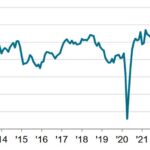
Challenges Looming: Declining S&P Global PMI Highlights Risks for Canada’s Manufacturing Sector
Tháng 4 1, 2025OPEC+ Production Plans: Navigating Future Oil Prices and Market Dynamics
Tháng 4 1, 2025March 2025 S&P Global US Manufacturing PMI Report: Growth Amidst Challenges
The S&P Global US Manufacturing PMI for March 2025 has provided insightful updates regarding the health of the manufacturing sector, revealing a reading of 50.2. This figure has surpassed both the flash estimate of 49.8 and the anticipated 49.9, indicating a consistent, albeit moderate, expansion in manufacturing activities. However, the results also showcase a decline from February’s more robust 52.7, suggesting a need for cautious assessment.
Understanding the PMI Context
The Purchasing Managers’ Index (PMI) is a critical economic indicator that encapsulates the prevailing economic trends in the manufacturing and services sectors. A PMI reading above 50 signifies that a sector is experiencing growth, while readings below 50 indicate contraction. In this context, the March PMI of 50.2 serves as a beacon of cautious optimism, highlighting a continued expansion in the manufacturing sector, despite the notable drop from the previous month.
The reported modest growth can be attributed largely to a slight uptick in new orders, which is vital for driving future production and potential employment opportunities. This increase, while not significant, signifies a glimmer of resilience in demand, fostering hopes for sustained activity in the coming months.
Analyzing Key Components
New Orders: The report highlighted a measured increase in new orders, which, although it remained below levels indicative of robust growth, contributes to a positive outlook. The moderate rise in new orders can be perceived as a sign that consumers and businesses still have faith in the manufacturing sector, providing a foundation for continued activity. For further insights on investment fundamentals, readers can explore the importance of consistent investment principles in value investing by checking out this blog on value investing strategies.
Hiring Trends: Conversely, employment growth has stalled, painting a more sobering picture. The stagnation in hiring reflects a broader caution among businesses, as they adapt to fluctuating economic conditions. A tepid job market could imply challenges in addressing increased demand should new orders experience a significant upturn.
Cost Inflation Concerns: Moreover, the report pointed to a rise in cost inflation, driven by elevated input prices. This trend is a growing concern for manufacturers, as rising costs can erode profit margins and ultimately impact operational sustainability. Maintaining competitive pricing amidst increasing costs is a common challenge that many sectors are grappling with, stirring calls for strategic innovation and efficiency improvements. To avoid falling into financial pitfalls during uncertain times, investors can refer to this guide on investment mistakes to avoid in 2023.
Conclusion: Navigating the Current Landscape
In summary, the March 2025 S&P Global US Manufacturing PMI reflects a landscape of tentative growth tempered by challenges. The PMI’s reading of 50.2 signifies a continuation of expansion in the manufacturing sector, even as it struggles with the dual pressures of stalled hiring and rising costs. As companies navigate these complexities, the focus will likely shift towards efficiency and adaptability, ensuring they are equipped to tackle potential economic fluctuations in the upcoming months.
As we move forward, keeping an eye on these indicators will provide valuable insights into the direction of the manufacturing sector and its broader implications for the economy. Furthermore, to build a strong investment strategy, it’s crucial to learn from past errors. For a comprehensive analysis on avoiding common investment mistakes, you may also find valuable takeaways from this blog on common investment pitfalls.

